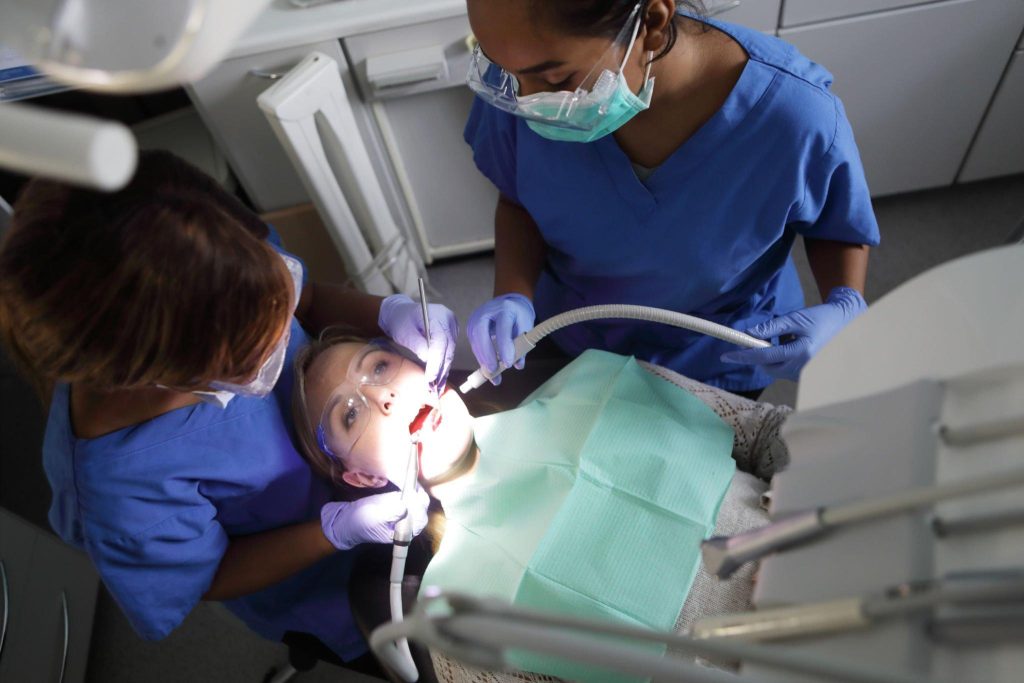Advancements in digital health technologies are increasingly playing a crucial role in enhancing children’s oral and dental health. Bastani et al. (2022) emphasized the significance of these technologies in increasing access to oral health solutions for children.
Here, we’ll explore the various digital health technologies that are revolutionizing pediatric dentistry, offering innovative solutions to traditional challenges in children’s oral healthcare.

The Emergence of Digital Health in Pediatric Dentistry
Transforming Children’s Oral Health Care
Digital technologies such as telemedicine, mobile applications, and virtual reality are providing novel ways to diagnose, treat, and manage oral health issues in children.
Key Innovations:
- Telemedicine: Offering remote consultations and diagnoses, especially in underserved areas.
- Mobile Health Apps: Interactive tools for children and parents to monitor and improve oral health practices.
- Virtual Reality: Enhancing patient education and reducing anxiety during dental procedures.
Enhancing Access to Dental Care
Bridging the Gap in Pediatric Oral Health
Digital health technologies are crucial in overcoming barriers to accessing dental care, particularly for children in remote or underserved communities.
Impact on Access:
- Wider Reach: Tele-dentistry extends dental services to remote areas, where traditional dental care might be inaccessible (Bastani et al., 2022).
- Cost-Effective Solutions: Reducing the costs associated with dental visits and treatments.
- Convenience: Offering flexible scheduling and immediate access to dental advice.

The Role of Mobile Applications
Empowering Parents and Children
Digital health apps are empowering parents and children with tools and information to take proactive steps in maintaining oral health.
Benefits of Mobile Apps:
- Educational Content: Interactive and engaging content to educate children about oral hygiene.
- Monitoring Tools: Apps that track oral health habits and provide reminders for dental care.
- Parental Guidance: Assisting parents in managing their children’s dental health effectively.
Advancing Diagnostic and Treatment Procedures
Leveraging Technology for Better Outcomes
Innovative digital technologies are enhancing diagnostic accuracy and treatment efficiency in pediatric dentistry.
Technological Advancements:
- Automated Diagnostics: AI-driven tools that offer precise diagnostics.
- Personalized Treatment Plans: Utilizing digital data to tailor treatments to individual needs.
- 3D Printing in Orthodontics: Customized orthodontic devices and aligners, produced quickly and accurately.

Interactive Patient Education
Engaging Children in Oral Health
Digital technologies provide interactive and fun ways to educate children about the importance of oral health, encouraging better hygiene practices.
Educational Tools:
- Gamification: Using games to teach children about brushing and flossing techniques.
- Virtual Reality Experiences: Simulations that demystify dental procedures and alleviate fears.
- Online Resources: Accessible educational materials for both children and parents.
Addressing Challenges and Limitations
Navigating the Digital Landscape
While digital health technologies offer numerous benefits, challenges such as digital literacy, data security, and integration with traditional healthcare systems need attention.
Overcoming Barriers:
- Ensuring Data Privacy: Safeguarding patient information in digital platforms.
- Bridging the Digital Divide: Making technology accessible to all socioeconomic groups.
- Integrating with Existing Systems: Seamless integration of digital tools with current healthcare practices.

Future Directions in Digital Pediatric Dentistry
Innovations on the Horizon
The future of children’s oral and dental health is closely tied to the ongoing evolution of digital health technologies.
Future Innovations:
- Advanced AI and Machine Learning: Further development of AI for personalized care and predictive analytics.
- Wearable Dental Technology: Devices that monitor oral health indicators in real-time.
- Augmented Reality Applications: Enhanced patient education and training tools for dental professionals.
Conclusion
Digital health technologies are significantly improving access to oral health solutions for children, offering innovative, cost-effective, and engaging approaches to pediatric dental care. As these technologies continue to evolve, they promise to further revolutionize the field of pediatric dentistry, making dental care more accessible, personalized, and efficient for children worldwide.
